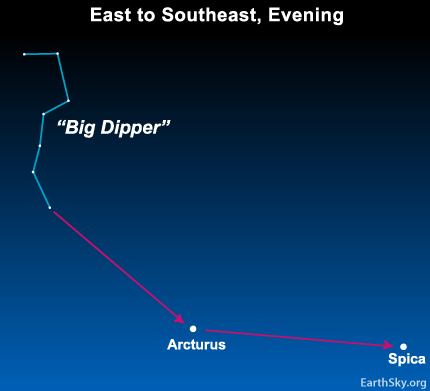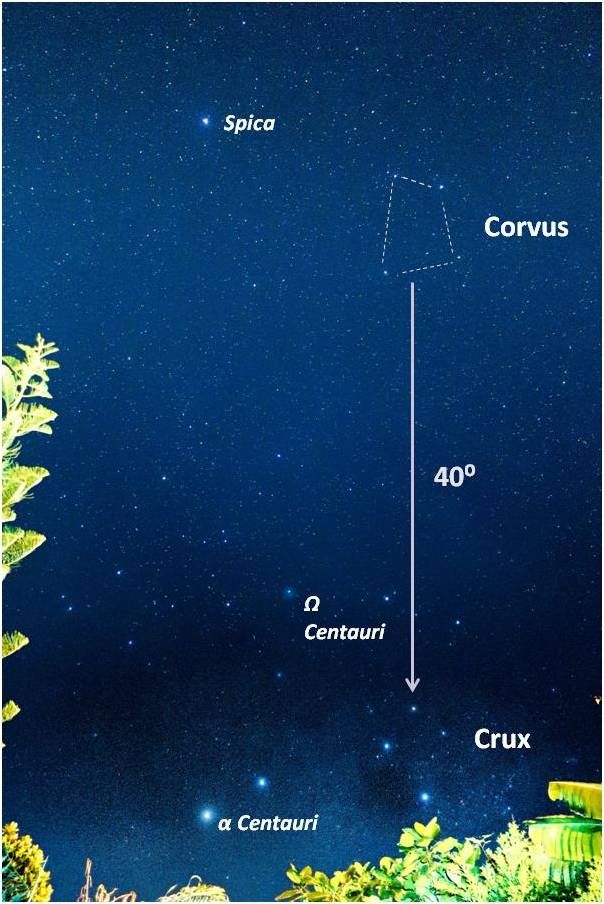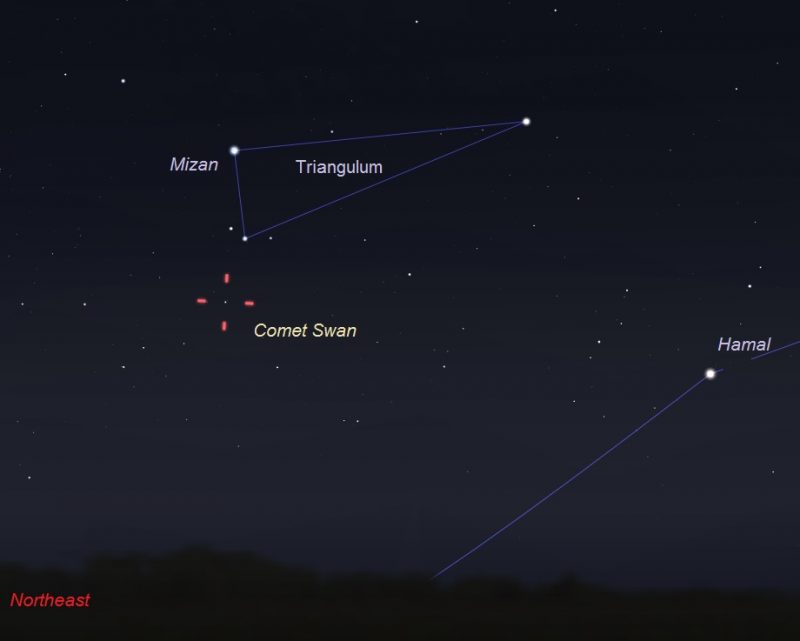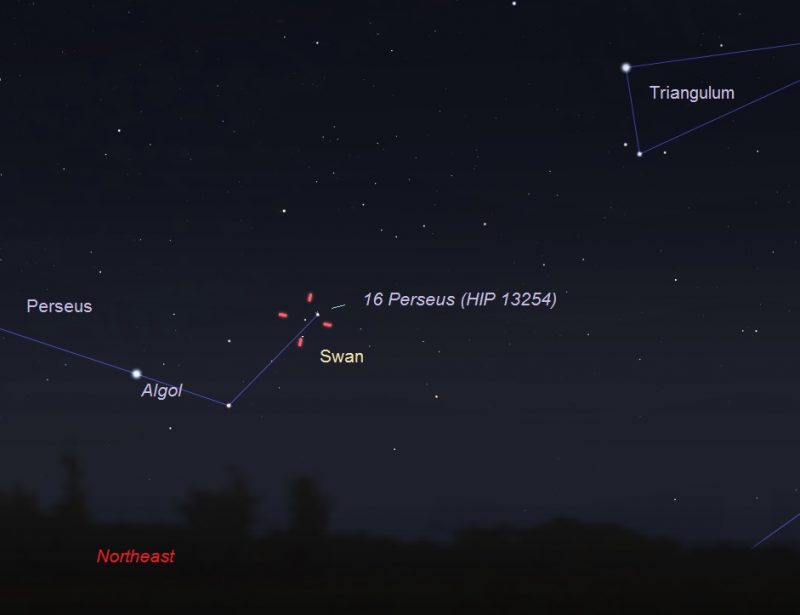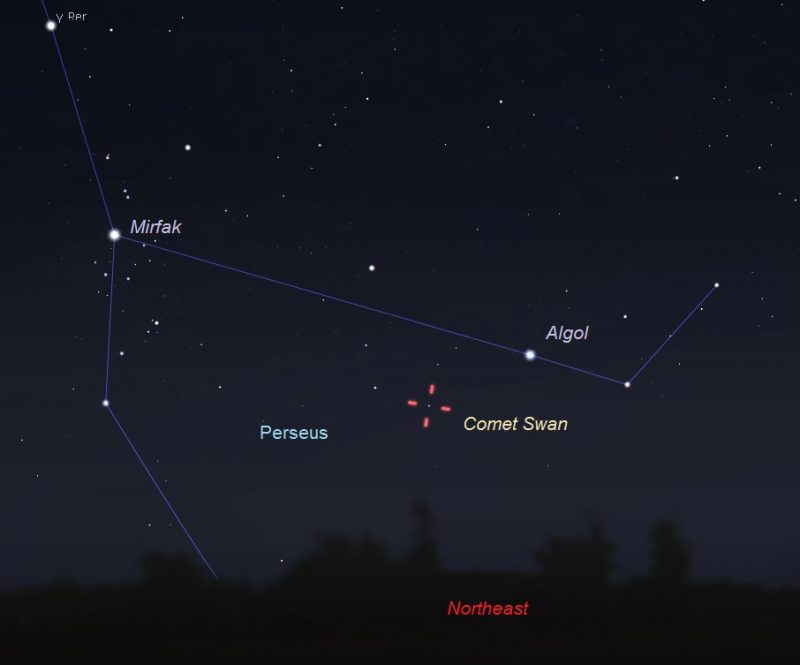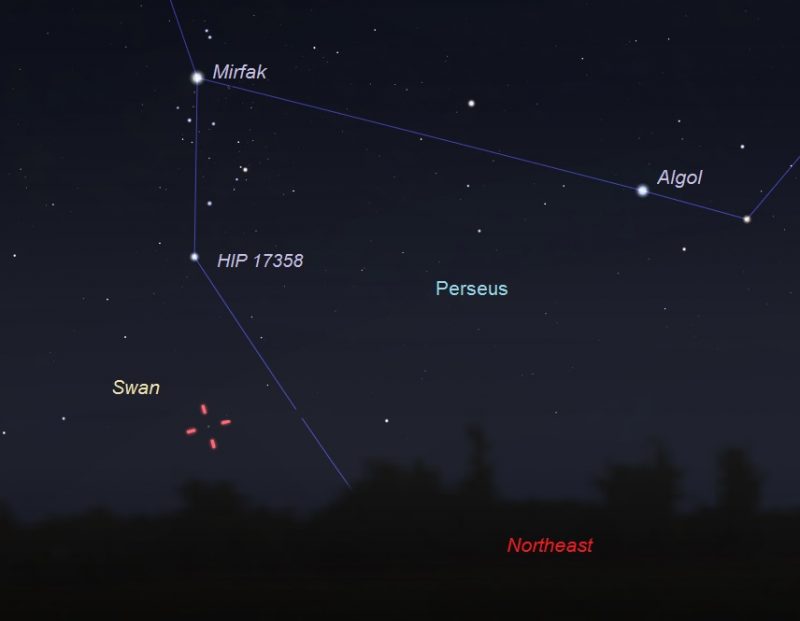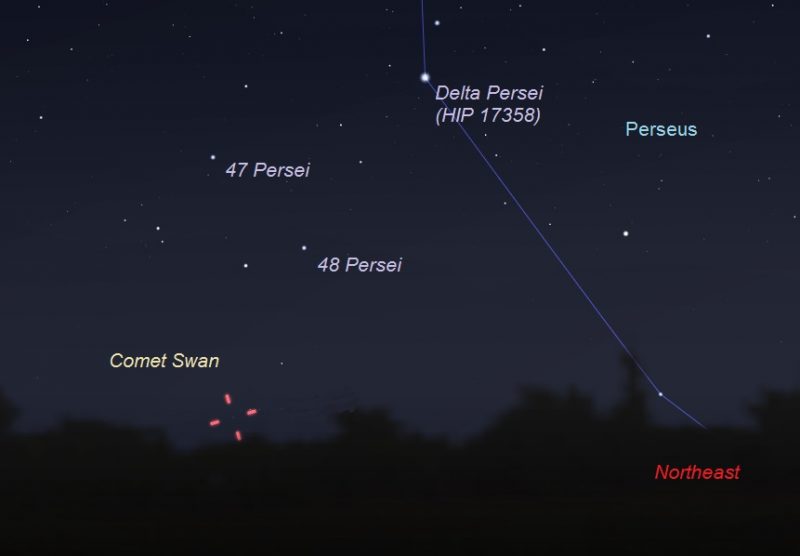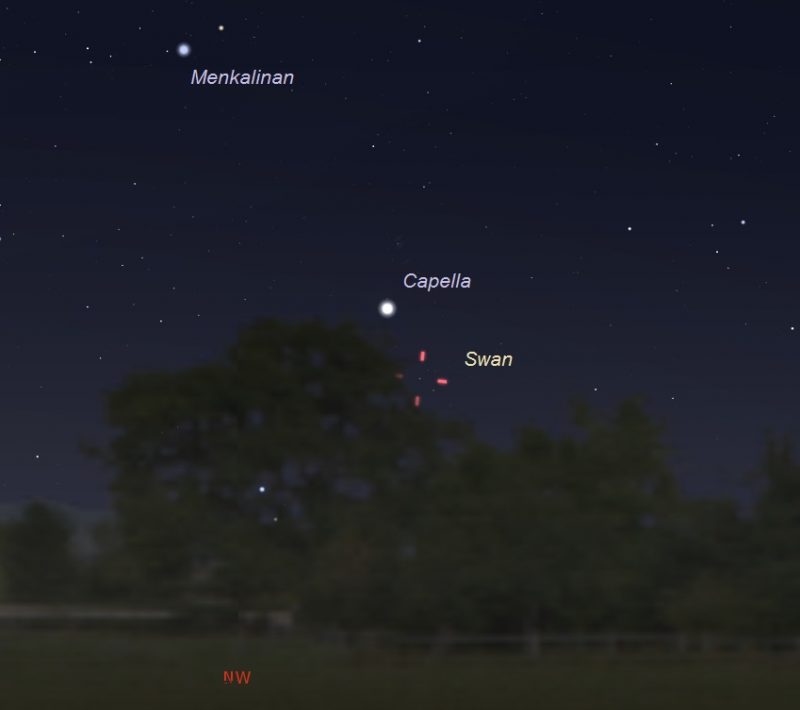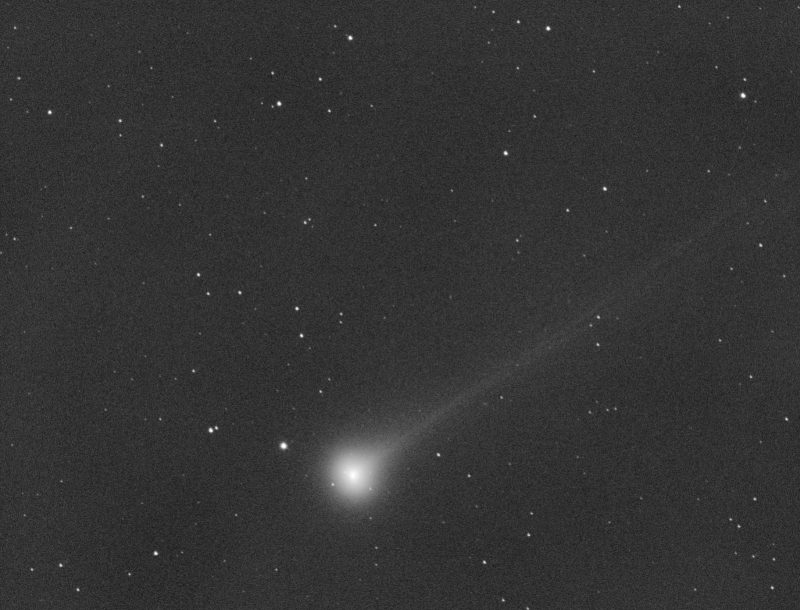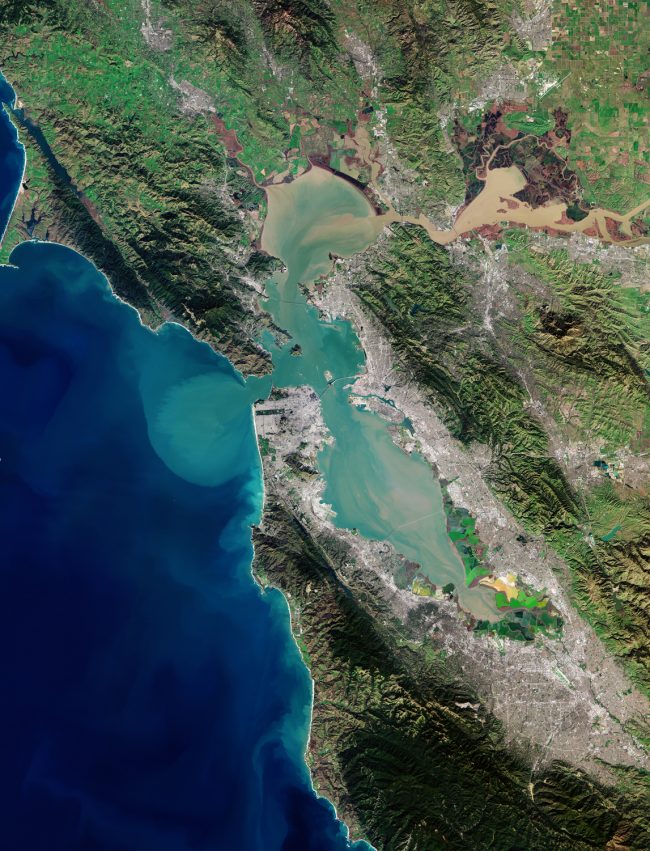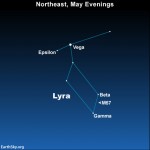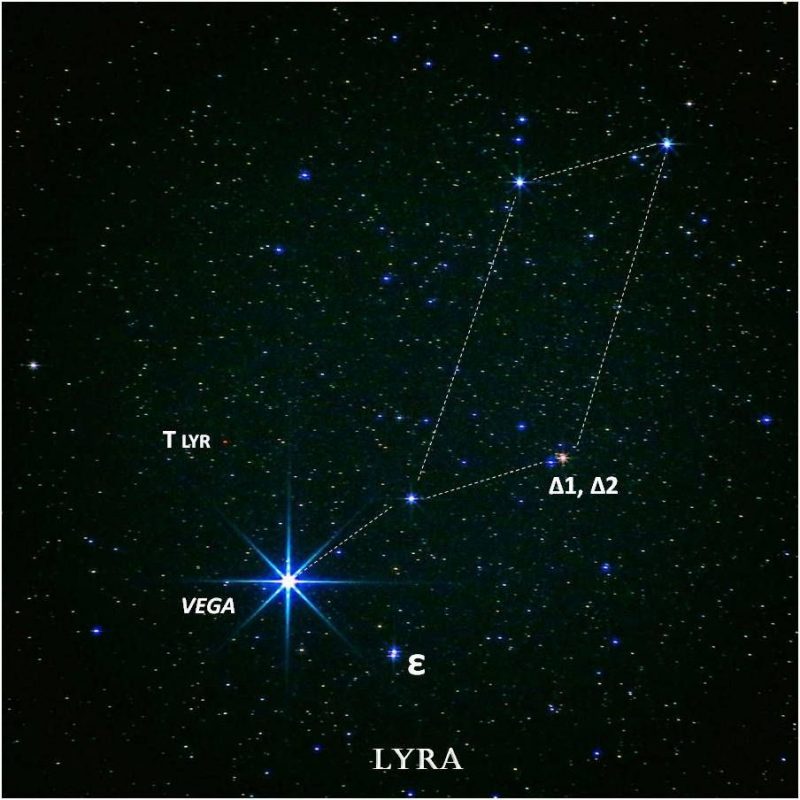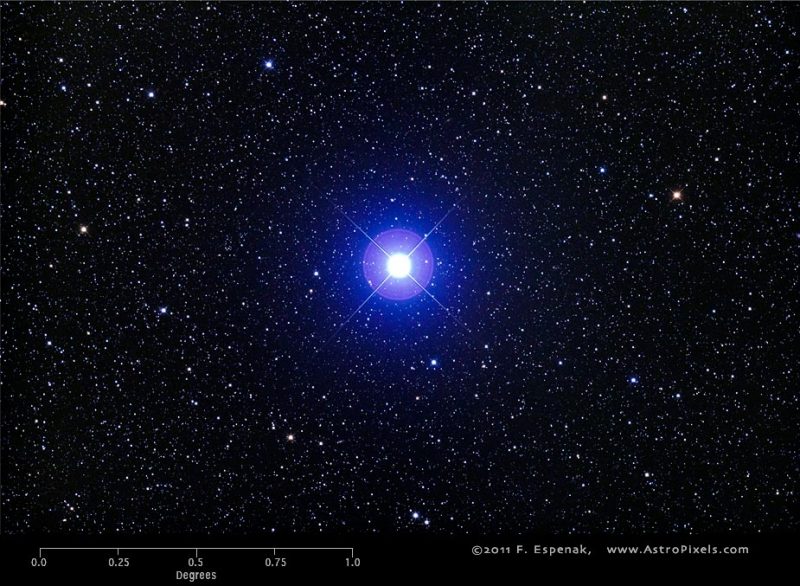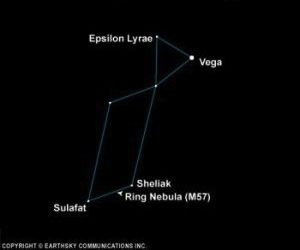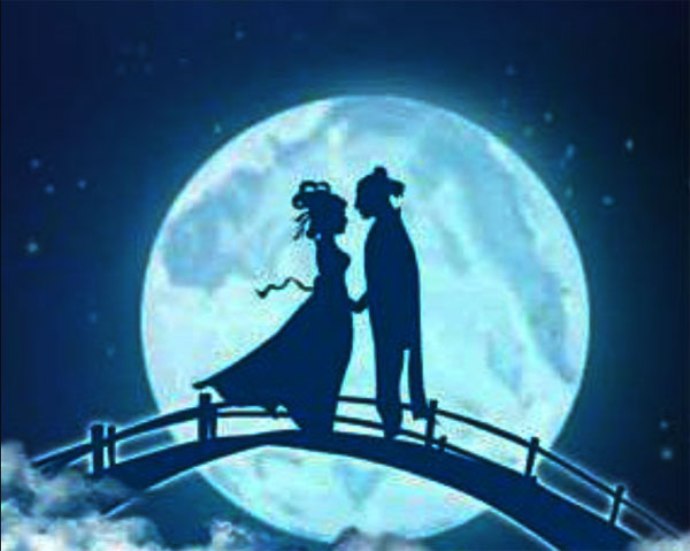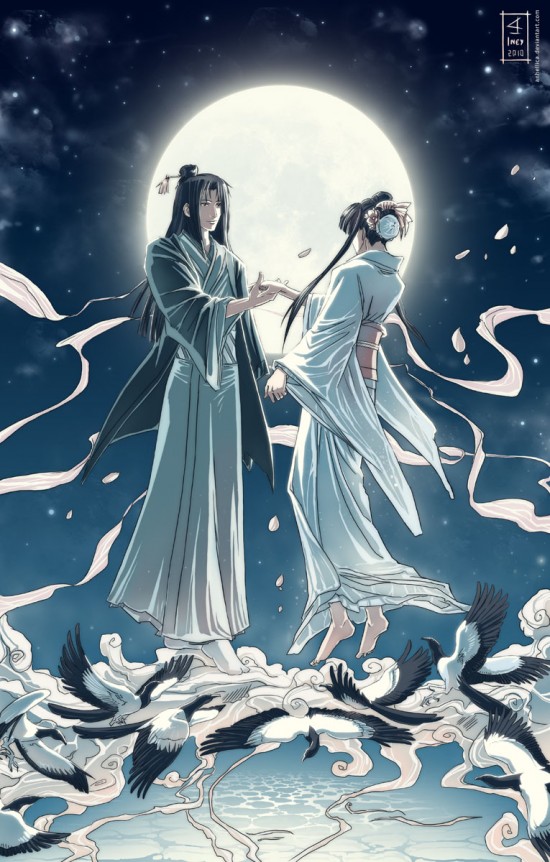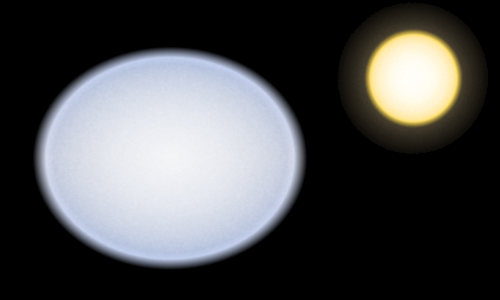

Most Blue Moons are not blue in color. This photo of a moon among fast-moving clouds was created using special blue filters. Image via our friend Jv Noriega.
The next Blue Moon will come on October 31, 2020. It’ll be called a Blue Moon because it’ll be the second of two full moons to occur in a single calendar month. The last Blue Moon by this definition of the term happened on March 31, 2018.
There’s another definition for Blue Moon. It can be the third of four full moons in a single season, with a season being between a solstice and equinox. The next seasonal Blue Moon will be August 22, 2021.
In recent years, people have been using the name Blue Moon for these two different sorts of moons: second of two full moons in a calendar month, or third of four full moons in a single season.
Someday, you might see an actual blue-colored moon. Meanwhile, the moon you’ll see on October 31, 2020, likely won’t look blue, and blue-colored moons in photos – like the ones on this page – are usually made using special blue camera filters or in a post-processing program such as PhotoShop.
EarthSky 2020 lunar calendars are available! Nearly sold out. Order now!
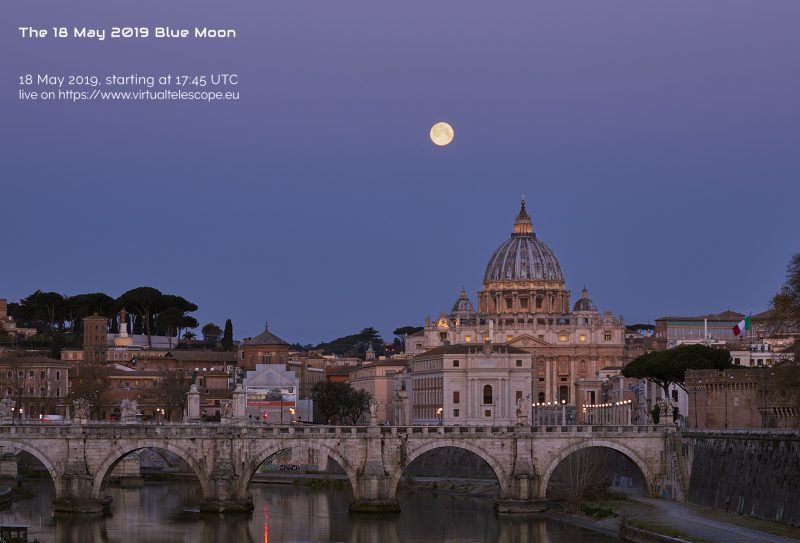
The Virtual Telescope Project in Rome, Italy, hosted a live viewing of the May 18, 2019, full moon rising above the Rome skyline.
Let’s talk about seasonal Blue Moons first. A year has 12 months, and months – or “moonths” – have lengths more or less based on a single orbit of the moon around Earth. What we call a season – winter, spring, summer, fall – typically lasts three months, and typically has three full moons.
If a season has four full moons, then the third full moon may be called a Blue Moon, according to the old Maine Farmer’s Almanac. There was a Blue Moon by this definition on November 21, 2010, another on August 20-21, 2013, another on May 21, 2016, and another on May 18, 2019. The next will be on August 22, 2021.
The best-known and most popular definition of Blue Moon is that it describes the second full moon of a calendar month. By this definition, there was a Blue Moon on July 31, 2015, January 31, 2018, and March 31, 2018. The next one will be October 31, 2020.
The time between one full moon and the next is close to the length of a calendar month. So the only time one month can have two full moons is when the first full moon happens in the first few days of the month. This happens every two to three years, so these sorts of Blue Moons come about that often.
Very rarely, a seasonal Blue Moon (third of four full moons in one season) and a monthly Blue Moon (second of two full moons in one calendar month) can occur in the same calendar year. For this to happen, you need 13 full moons between successive December solstices for a seasonal Blue Moon – and, generally, 13 full moons in one calendar year for a monthly Blue Moon.
This will next happen in the year 2048, when a monthly Blue Moon falls on January 31, and a seasonal Blue Moon on August 23.
Then 19 years later, in the year 2067, there will be a monthly Blue Moon on March 30, and a seasonal Blue Moon on November 20. In this instance, there are 13 full moons between successive December solstices – but only 12 full moons in one calendar year and no February 2067 full moon.
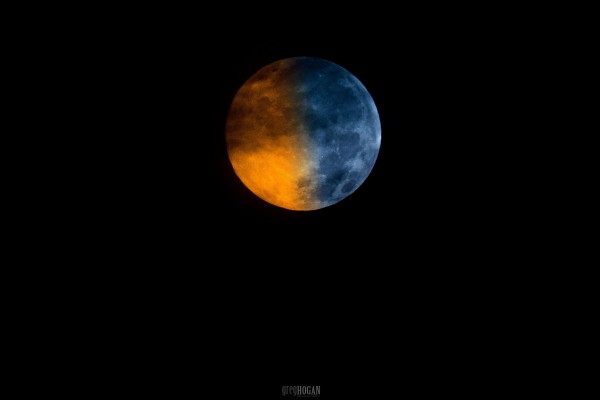
Blue moons don’t really look blue in color. Greg Hogan got this shot of a Blue Moon (blue in name only!) on July 31, 2015. He wrote: “Having some fun with the blue moon idea……I blended the same image twice one with a blue tint, and one normal. :) “
The idea of a Blue Moon as the second full moon in a month stemmed from the March 1946 issue of Sky and Telescope magazine, which contained an article called Once in a Blue Moon by James Hugh Pruett. Pruett was referring to the 1937 Maine Farmer’s Almanac, but he inadvertently simplified the definition. He wrote:
Seven times in 19 years there were – and still are – 13 full moons in a year. This gives 11 months with one full moon each and one with two. This second in a month, so I interpret it, was called Blue Moon.
Had James Hugh Pruett looked at the actual date of the 1937 Blue Moon, he would have found that it had occurred August 21, 1937. Also, there were only 12 full moons in 1937. You generally need 13 full moons in one calendar year to have two full moons in one calendar month.
However, that fortuitous oversight gave birth to a new and perfectly understandable definition for Blue Moon.
EarthSky’s Deborah Byrd happened upon a copy of this old 1946 issue of Sky and Telescope in the stacks of the Peridier Library at the University of Texas Astronomy Department in the late 1970s. Afterward, she began using the term Blue Moon to describe the second full moon in a calendar month on the radio. Later, this definition of Blue Moon was also popularized by a book for children by Margot McLoon-Basta and Alice Siegel, called Kids’ World Almanac of Records and Facts, published in New York by World Almanac Publications in 1985. The second-full-moon-in-a-month definition was also used in the board game Trivial Pursuit.
Today, it has become part of folklore. As the folklorist Philip Hiscock wrote in his comprehensive article Once in a Blue Moon:
‘Old folklore’ it is not, but real folklore it is.
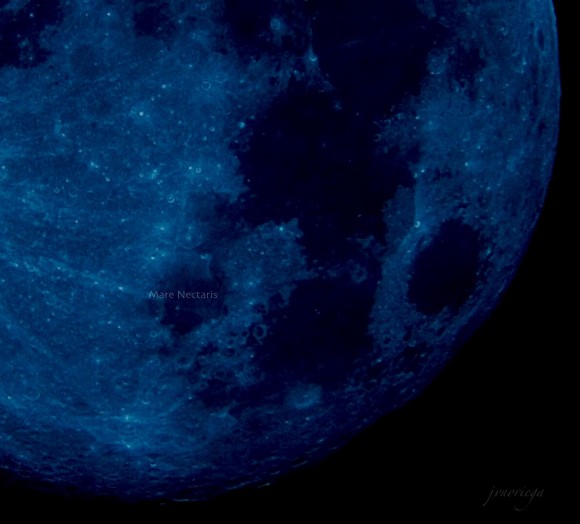
This photo was created using special blue filters, too. Image via EarthSky Facebook friend Jv Noriega.
Can a moon be blue in color? Yes, but it’s very rare to see a blue-colored moon. You need unusual sky conditions – certain-sized particles of dust or smoke – to create them.
Blue-colored moons aren’t predictable. So don’t be misled by the photos above. The sorts of moons people commonly call Blue Moons aren’t usually blue.
For more about truly blue-colored moons, click here.
Resources:

What most call a Blue Moon isn’t blue in color. It’s only Blue in name. This great moon photo is from EarthSky Facebook friend Rebecca Lacey in Cambridge, Idaho.
Bottom line: A blue-colored moon is rare. But folklore has defined two different kinds of Blue Moons, and moons that are Blue by name are pretty common. The next Blue Moon will come on October 31, 2020. It’ll be called a Blue Moon because it’ll be the second of two full moons in a single calendar month.
Possible to have only 2 full moons in a single season?
Enjoying EarthSky so far? Sign up for our free daily newsletter today!
from EarthSky https://ift.tt/3fYhcC8


Most Blue Moons are not blue in color. This photo of a moon among fast-moving clouds was created using special blue filters. Image via our friend Jv Noriega.
The next Blue Moon will come on October 31, 2020. It’ll be called a Blue Moon because it’ll be the second of two full moons to occur in a single calendar month. The last Blue Moon by this definition of the term happened on March 31, 2018.
There’s another definition for Blue Moon. It can be the third of four full moons in a single season, with a season being between a solstice and equinox. The next seasonal Blue Moon will be August 22, 2021.
In recent years, people have been using the name Blue Moon for these two different sorts of moons: second of two full moons in a calendar month, or third of four full moons in a single season.
Someday, you might see an actual blue-colored moon. Meanwhile, the moon you’ll see on October 31, 2020, likely won’t look blue, and blue-colored moons in photos – like the ones on this page – are usually made using special blue camera filters or in a post-processing program such as PhotoShop.
EarthSky 2020 lunar calendars are available! Nearly sold out. Order now!

The Virtual Telescope Project in Rome, Italy, hosted a live viewing of the May 18, 2019, full moon rising above the Rome skyline.
Let’s talk about seasonal Blue Moons first. A year has 12 months, and months – or “moonths” – have lengths more or less based on a single orbit of the moon around Earth. What we call a season – winter, spring, summer, fall – typically lasts three months, and typically has three full moons.
If a season has four full moons, then the third full moon may be called a Blue Moon, according to the old Maine Farmer’s Almanac. There was a Blue Moon by this definition on November 21, 2010, another on August 20-21, 2013, another on May 21, 2016, and another on May 18, 2019. The next will be on August 22, 2021.
The best-known and most popular definition of Blue Moon is that it describes the second full moon of a calendar month. By this definition, there was a Blue Moon on July 31, 2015, January 31, 2018, and March 31, 2018. The next one will be October 31, 2020.
The time between one full moon and the next is close to the length of a calendar month. So the only time one month can have two full moons is when the first full moon happens in the first few days of the month. This happens every two to three years, so these sorts of Blue Moons come about that often.
Very rarely, a seasonal Blue Moon (third of four full moons in one season) and a monthly Blue Moon (second of two full moons in one calendar month) can occur in the same calendar year. For this to happen, you need 13 full moons between successive December solstices for a seasonal Blue Moon – and, generally, 13 full moons in one calendar year for a monthly Blue Moon.
This will next happen in the year 2048, when a monthly Blue Moon falls on January 31, and a seasonal Blue Moon on August 23.
Then 19 years later, in the year 2067, there will be a monthly Blue Moon on March 30, and a seasonal Blue Moon on November 20. In this instance, there are 13 full moons between successive December solstices – but only 12 full moons in one calendar year and no February 2067 full moon.

Blue moons don’t really look blue in color. Greg Hogan got this shot of a Blue Moon (blue in name only!) on July 31, 2015. He wrote: “Having some fun with the blue moon idea……I blended the same image twice one with a blue tint, and one normal. :) “
The idea of a Blue Moon as the second full moon in a month stemmed from the March 1946 issue of Sky and Telescope magazine, which contained an article called Once in a Blue Moon by James Hugh Pruett. Pruett was referring to the 1937 Maine Farmer’s Almanac, but he inadvertently simplified the definition. He wrote:
Seven times in 19 years there were – and still are – 13 full moons in a year. This gives 11 months with one full moon each and one with two. This second in a month, so I interpret it, was called Blue Moon.
Had James Hugh Pruett looked at the actual date of the 1937 Blue Moon, he would have found that it had occurred August 21, 1937. Also, there were only 12 full moons in 1937. You generally need 13 full moons in one calendar year to have two full moons in one calendar month.
However, that fortuitous oversight gave birth to a new and perfectly understandable definition for Blue Moon.
EarthSky’s Deborah Byrd happened upon a copy of this old 1946 issue of Sky and Telescope in the stacks of the Peridier Library at the University of Texas Astronomy Department in the late 1970s. Afterward, she began using the term Blue Moon to describe the second full moon in a calendar month on the radio. Later, this definition of Blue Moon was also popularized by a book for children by Margot McLoon-Basta and Alice Siegel, called Kids’ World Almanac of Records and Facts, published in New York by World Almanac Publications in 1985. The second-full-moon-in-a-month definition was also used in the board game Trivial Pursuit.
Today, it has become part of folklore. As the folklorist Philip Hiscock wrote in his comprehensive article Once in a Blue Moon:
‘Old folklore’ it is not, but real folklore it is.

This photo was created using special blue filters, too. Image via EarthSky Facebook friend Jv Noriega.
Can a moon be blue in color? Yes, but it’s very rare to see a blue-colored moon. You need unusual sky conditions – certain-sized particles of dust or smoke – to create them.
Blue-colored moons aren’t predictable. So don’t be misled by the photos above. The sorts of moons people commonly call Blue Moons aren’t usually blue.
For more about truly blue-colored moons, click here.
Resources:

What most call a Blue Moon isn’t blue in color. It’s only Blue in name. This great moon photo is from EarthSky Facebook friend Rebecca Lacey in Cambridge, Idaho.
Bottom line: A blue-colored moon is rare. But folklore has defined two different kinds of Blue Moons, and moons that are Blue by name are pretty common. The next Blue Moon will come on October 31, 2020. It’ll be called a Blue Moon because it’ll be the second of two full moons in a single calendar month.
Possible to have only 2 full moons in a single season?
Enjoying EarthSky so far? Sign up for our free daily newsletter today!
from EarthSky https://ift.tt/3fYhcC8


